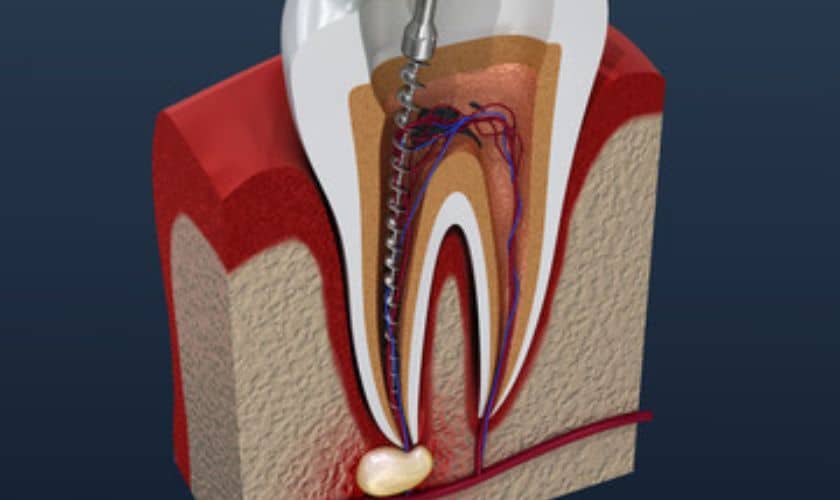The thought of needing a root canal treatment can be daunting for many, but it’s a dental procedure that can save a severely damaged or infected tooth. Understanding the signs and symptoms that warrant a root canal is crucial for timely intervention and preserving your oral health.
In this comprehensive guide, we will delve into the various indicators that suggest you may need a root canal. From persistent toothaches and heightened sensitivity to gum swelling and dental abscesses, recognizing these warning signs can make all the difference in preventing further complications. We’ll also explore the root canal procedure itself, debunk some myths, and provide essential insights to help you make informed decisions about your dental care.
What Is a Root Canal Treatment?
1. Pulp Removal: A root canal treatment is a dental procedure that involves the removal of infected or damaged pulp from the interior of a tooth. The pulp contains nerves, blood vessels, and connective tissue. When it becomes infected or inflamed, it can cause severe pain and discomfort.
2. Cleaning and Sealing: After removing the infected pulp, the dentist thoroughly cleans and disinfects the inner chamber of the tooth. Once cleaned, the tooth is sealed with a biocompatible material, typically gutta-percha, to prevent further infection. In many cases, a crown is placed over the treated tooth to restore its strength and functionality. Root canals are performed to save a tooth that might otherwise require extraction.
Signs and Symptoms That May Warrant a Root Canal
1. Persistent Toothache: An ongoing, severe toothache, especially when chewing or applying pressure to the tooth, can be a sign of pulp inflammation or infection.
2. Sensitivity to Hot and Cold: Increased sensitivity to hot or cold temperatures, lasting even after the stimulus is removed, can indicate nerve or pulp damage within the tooth.
3. Swollen or Tender Gums: Swelling or tenderness in the gums surrounding a specific tooth can be a sign of infection that has spread to the surrounding tissues.
4. Darkening or Discoloration of the Tooth: A tooth that has darkened or changed color, particularly if it appears gray or black, may signal pulp damage.
5. Pimple-like Bump on the Gums (Dental Abscess): The development of a pimple-like bump on the gums near a tooth can indicate a dental abscess, which is a collection of pus caused by a severe infection. This is often accompanied by pain and swelling.
If you experience any of these signs or symptoms, it’s essential to consult a dentist promptly for a proper evaluation and diagnosis. Early detection and intervention can often save the tooth and alleviate discomfort.
Importance of Timely Intervention
1. Preventing Further Complications: Timely intervention when symptoms first arise can prevent the spread of infection and further complications. Without prompt treatment, the infection can extend to neighboring teeth, gums, or even the jawbone, leading to more extensive and costly dental procedures.
2. Preserving Natural Teeth: Root canal treatments are often performed to save a natural tooth that might otherwise require extraction. By seeking treatment at the right time, patients can maintain their natural smile, retain proper chewing function, and avoid the potential downsides of tooth loss, such as shifting of adjacent teeth or changes in bite alignment.
In essence, early detection and timely root canal treatment not only relieve pain but also protect oral health and preserve natural teeth, contributing to long-term well-being.
The Root Canal Procedure
1. Pulp Removal and Cleaning: During a root canal, the dentist or endodontist removes the infected or damaged pulp from the tooth’s inner chamber. After removal, the empty space is meticulously cleaned and disinfected to eliminate any remaining bacteria.
2. Sealing and Restoration: Once the cleaning is complete, the tooth is sealed with a biocompatible material, typically gutta-percha. To restore its strength and functionality, a crown is often placed over the treated tooth. This crown not only protects the tooth but also ensures it can continue to function like a natural tooth.
The root canal procedure is designed to save a damaged or infected tooth, relieve pain, and prevent the need for extraction while restoring normal dental function.
Myths and Facts About Root Canals
Myth 1: Root Canals Are Extremely Painful
Fact: This is a widespread misconception. Thanks to modern dental techniques and anesthesia, root canals are typically no more uncomfortable than having a dental filling. In fact, root canals are often performed to alleviate severe toothaches caused by pulp infection, so the procedure itself brings relief.
Myth 2: Root Canals Cause Illness
Fact: There is no scientific evidence supporting the idea that root canal treatments lead to systemic illness or contribute to other health problems. Root canals are a safe and effective way to save a tooth that might otherwise need to be extracted, which can have its own set of complications.
These myths can deter people from seeking necessary root canal treatment, but understanding the facts can help individuals make informed decisions about their dental health.
Prevention and Dental Care Tips
1. Maintain Excellent Oral Hygiene: Consistent oral hygiene practices, including regular brushing, flossing, and using an antimicrobial mouthwash, can help prevent tooth decay and gum infections that might lead to the need for a root canal.
2. Attend Regular Dental Check-Ups: Routine dental check-ups enable early detection of dental issues. Your dentist can identify problems before they progress to the point of requiring a root canal. These check-ups also include professional cleanings to remove plaque and tartar, reducing the risk of infection.
By following these tips, individuals can proactively safeguard their oral health and reduce the likelihood of experiencing dental problems that necessitate root canal treatment.
Source : Teeth Talk Girl
In conclusion, understanding the signs and symptoms that may indicate the need for a root canal treatment is essential for proactive oral health care. Timely intervention can prevent complications, preserve natural teeth, and debunking common myths helps individuals make informed decisions about their dental well-being. Prioritizing prevention and regular dental check-ups is key to a healthy smile.




